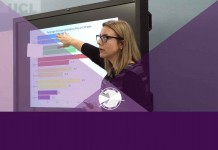Tricks to solve Percentage Problems
Here we shall discuss about Tricks to solve Percentage Problems of the Quantitative aptitude section. Now a days this topic have become an important part of the Quant test in all Entrance Exams.So Here we will help you in this.We will provide short tricks on Percentage problems.
Percentage is a fraction whose denominator is always 100. x percentage is represented by x%.
Percentage word which is a combination of a word ” per cent “ that means for every hundred. The number, which is in a fraction form whose denominator is “100” is called as a percentage and the numerator of the same number is called as a rate per cent .
How to calculate Percentage?
Percentage = ( Value / Total Value ) X 100
Percentage to Decimal Conversion or Fraction Conversion
1 = 100%
1/2 = 50%
1/3 = 33 1/3%
1/4 = 25%
1/5 = 20%
1/6 = 162/3%
1/7 = 142/7%
1/8 = 121/2%
1/9 = 111/3%
1/10 = 10%
1/11 = 91/11%
1/10 = 81/3%
1/13 = 79/13%
1/16 = 6.25%
5/4 = 125%
3/2 = 150%
2 = 200%
7/2 = 350%
To express x% as a fraction :
We know, x% = x/100
Thus 10% = 10/100 (means 10 parts out of 100 parts) = 1/10 (means 1 part out of 10 parts)
To express x/y as a percentage :
We know that x/y = (x/y× 100 )
Thus 1/4 = ( 1/4 ×100 )% = 25% and 0.8 = ( 8/10 ×100 )% = 80%
If the price of a commodity increases by R%, then reduction in consumption as not to increase the expenditure is = [ R/(100+R)×100 ] %
If the price of a commodity decreases by R%, then the increase in consumption as not to decrease the expenditure is = [ R/(100-R)×100 ] %
Let the population of a town be P now and suppose it increases at the rate of R% per annum, then
Population after n years = P(1+R/100)^n
Population before n years =P/(1 + R/100)^n
Let the present value of a machine be P. Suppose it depreciates at the rate of R% per annum.
Value of the machine after n years= P(1-R/100)^n
Value of the machine n years ago=P/(1-R/100)^n



















